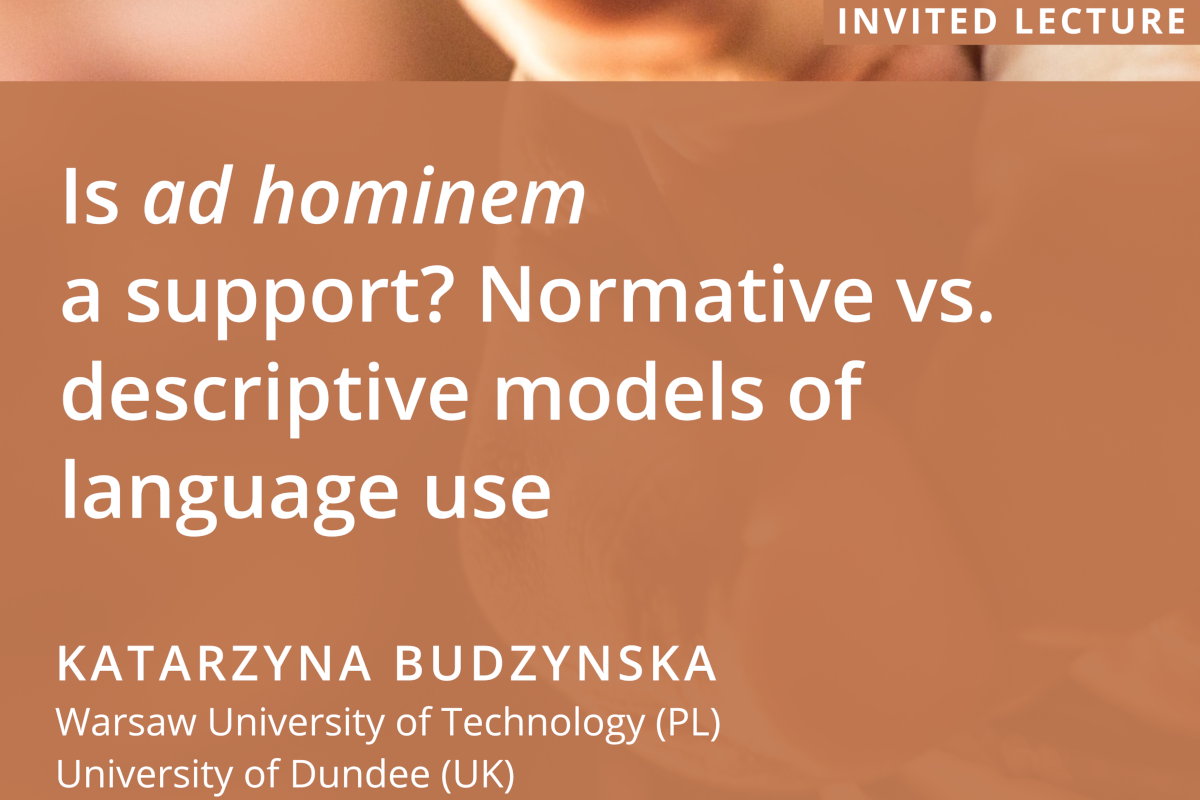
A recording of the talk (in English), along with the abstract, can be found below. Katarzyna Budzynska is associate professor at the Faculty of Administration and Social Science at the Warsaw University of Technology (Poland). She is also head of the Laboratory of The New Ethos and an honorary senior lecturer in the Centre for Argument Technology at the University of Dundee (UK).
Abstract
Is ad hominem a support? Normative vs. descriptive models of language use
This talk discusses the problem of ad hominem arguments. In contemporary argumentation study, they are defined as a reasoning pattern, an argumentation scheme, in which we conclude that an argument A should not be accepted, because its author, a speaker i, is a bad person (cf. Walton et al 2008). This approach to ad hominem can be called a normative model of language, i.e. a model which focuses on how we should use language to reason, rather than how we do use language to process information.
I argue that depending on the goal of investigating argumentation, either normative or descriptive models are suitable. If we aim to evaluate language use, e.g., in critical thinking or in expert system technologies, then normative models and typologies of argumentation schemes such as (Walton et al 2008) should be selected. If we, however, aim to analyse language use, e.g., in argument corpora or argument mining, then we need to develop new schemes which will describe the actual practice of how people argue in natural communication. In particular, we need to elaborate a scheme which captures how people use ad hominem arguments, when they talk, e.g. about politics or COVID-19.
Do people argue: “I will not accept your argument on vaccines, because you don’t know anything about medicine”, or rather: “You don’t know anything about medicine” in response to another speaker saying “Vaccines cause a 366% increase in miscarriages”? If the second example is a typical instance of ad hominem argument in naturally occurring communication, then it means that a descriptive model of language use should represent it as a dialogical scheme which includes conflict rather than an argumentation scheme based on the support.
